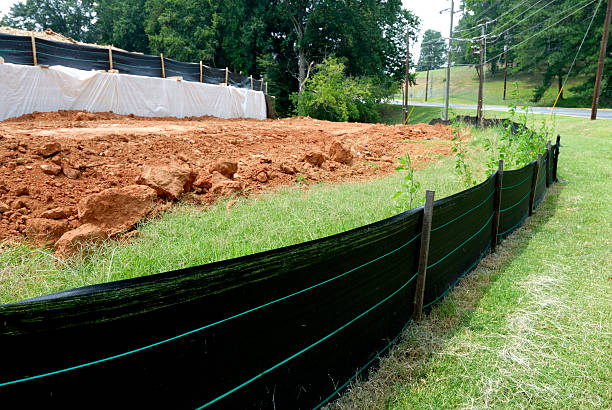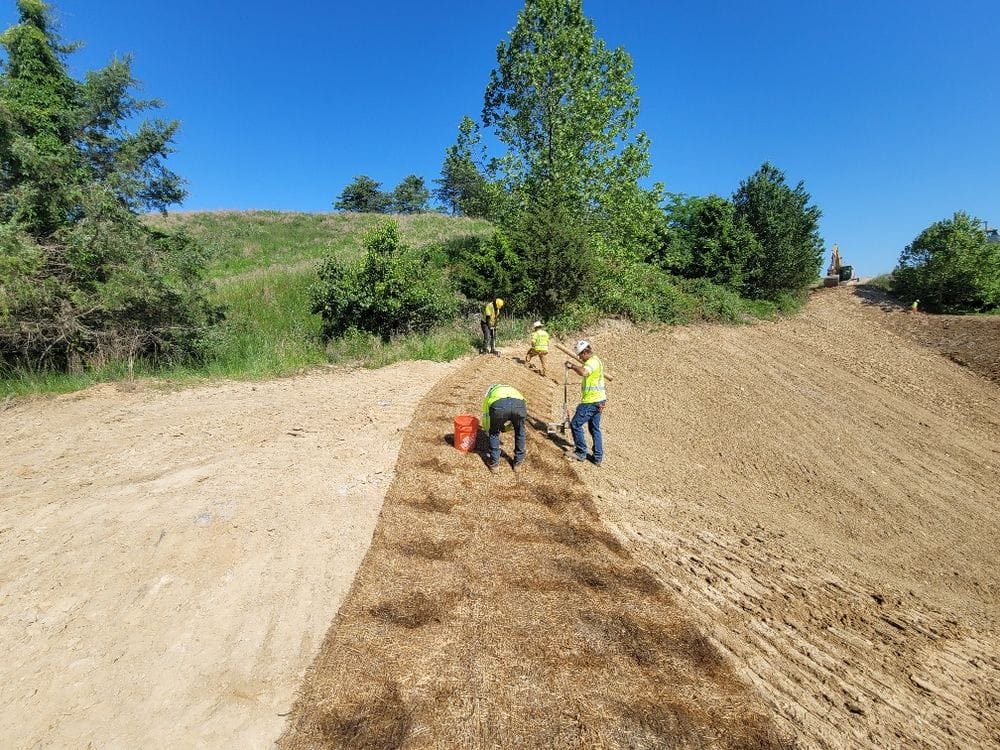Trusted Erosion Control: Memphis Erosion Control Solutions erosion control company
Wiki Article
Reliable Erosion Control Methods for Lasting Land Monitoring
Are you trying to find methods to efficiently manage erosion on your land? Look no additional! This article will certainly give you with useful info on the value of disintegration control in sustainable land monitoring. Discover the various sorts of disintegration and their effect on your land, in addition to natural approaches to manage erosion. Find out just how to carry out effective disintegration control measures and make sure correct tracking and maintenance. Beginning doing something about it today to safeguard and preserve your important land.Importance of Disintegration Control in Lasting Land Monitoring
Because it aids stop soil degradation and loss,Disintegration control is necessary for sustainable land administration. By applying effective disintegration control strategies, you can guarantee the long-lasting health and wellness and productivity of your land. Without appropriate disintegration control actions, dirt erosion can happen, causing the loss of valuable topsoil that is abundant in nutrients required for plant growth.Among the major factors erosion control is essential is because it helps to preserve dirt fertility. It takes away the natural issue and nutrients that plants require to thrive when soil wears down. This can lead to lowered crop returns and lowered efficiency of the land. In addition, erosion can bring about sedimentation in nearby water bodies, which can adversely influence marine communities.
One more key benefit of disintegration control is the prevention of land degradation. By applying disintegration control strategies such as terracing, shape plowing, and the usage of cover crops, you can help prevent land deterioration and maintain the health and wellness of your land.

Sorts Of Erosion and Their Effect On Land
Understanding the various kinds of erosion and exactly how they impact the land can aid you execute better land management practices. Disintegration is the process whereby soil, rocks, and other products are slowly deteriorated and moved by all-natural forces such as water, wind, and ice. There are four main kinds of disintegration: sheet disintegration, rill erosion, gully disintegration, and mass motion disintegration.Sheet erosion takes place when a thin layer of dirt is gotten rid of consistently from the surface of the land. Rill disintegration, on the other hand, happens when tiny networks or rivulets are formed on the land due to the flow of water.
Gully disintegration is much more extreme and happens when bigger channels or gullies are formed as a result of the constant circulation of water. This sort of disintegration can cause substantial damage to the land, causing loss of topsoil and plant life. Lastly, mass activity disintegration refers to the movement of big quantities of dirt and rocks downhill due to the force of gravity. This can happen in the form of landslides or dropping.
Comprehending these different sorts of erosion and their effect on the land is important for reliable land monitoring. By executing disintegration control techniques such as terracing, contour plowing, and reforestation, you can reduce erosion and protect the stability of the land. Furthermore, practicing good land management methods like appropriate crop rotation, maintaining ground cover, and using sediment control measures can better assist in preventing disintegration.
All-natural Erosion Control Approaches for Sustainable Land Monitoring
By implementing natural disintegration control approaches, you can properly maintain the honesty and handle of your land. One effective method is the usage of vegetation, such as plants and lawns, to support dirt and prevent disintegration. Planting indigenous types can assist enhance root thickness and bind the soil with each other, reducing the threat of erosion triggered by hefty rainfall or wind (Memphis Erosion Control Solutions silt fences). Furthermore, mulching is another natural method that can help manage disintegration. By applying a layer of natural compost, such as wood chips or straw, you can secure the dirt from the influence of raindrops, reducing soil compaction and runoff. Another natural disintegration control method is contouring the land. By creating shape lines or terraces on inclines, you can reduce down the flow of water and enable it to penetrate the soil, lowering erosion. In locations where disintegration is a significant problem, installing disintegration control coverings or mats can be beneficial. These mats are made from biodegradable materials and aid support the dirt up until plant life is developed. On the whole, by using these natural erosion control techniques, you can properly manage and shield your land from erosion, ensuring its long-lasting sustainability.Carrying Out Reliable Disintegration Control Procedures

To efficiently handle and secure your land from disintegration, you must take into consideration executing tested approaches that can help alleviate the threat. One such method is the use of disintegration control coverings. These coverings, made from artificial materials or natural fibers, are positioned on the dirt surface to support it and avoid erosion. They aid keep moisture, decrease debris overflow, and advertise the growth of plant life. An additional effective strategy is making use of terracing. Terracing entails developing degree systems on sloping land, which aids to decrease drainage and avoid erosion. It likewise read more permits the farming of plants on the terraced inclines. In addition, planting greenery is a critical step in erosion control. Turfs, hedges, and trees have extensive root systems that bind the soil with each other, lowering disintegration triggered by wind and water. Additionally, installing debris control measures such as silt fences and sediment fish ponds can help trap sediment and prevent it from entering neighboring water bodies. These procedures are particularly vital during construction activities. By executing these shown disintegration control techniques, you can properly safeguard your land and lessen the risk of erosion and its damaging effects.
Surveillance and Maintenance of Disintegration Control Methods
When useful site monitoring and preserving erosion control procedures, it is essential to regularly evaluate the erosion control blankets, terraces, vegetation, and debris control measures to ensure they are working correctly and properly preventing erosion (silt fences). By performing routine assessments, you can recognize any kind of concerns or shortages in the disintegration control methods and take necessary actions to remedy them
Start by checking the erosion control coverings. Look for indicators of damages or wear, such as tears or exposed dirt.
Following, check the terraces. Examine for signs of disintegration, such as debris accumulation or irregular surfaces. Guarantee that the terraces are properly created and kept to draw away water flow and decrease disintegration. Clear any type of collected sediment to maintain their capability.
Examine the plant life in the erosion control location. Correct plants coverage aids maintain the soil and stop disintegration.
Finally, inspect the sediment control actions, such as debris containers or debris fencings. Ensure they are effectively set up and operating as intended. Remove any collected sediment and make certain that the controls are properly preserved.
Regular surveillance and maintenance of erosion control steps are crucial for their long-lasting performance in avoiding disintegration and preserving lasting land management practices.
Final Thought
In verdict, you need to focus on disintegration control for lasting land management. By understanding the different types of erosion and their effect on the land, you can apply effective natural erosion control approaches. It is essential to frequently keep an eye on and preserve these methods to guarantee their long-lasting efficiency. By acting and implementing these steps, you can help secure the land from erosion and advertise lasting land management methods. Don't hesitate to make disintegration control a top priority for a much healthier and more sustainable future.Discover the various kinds of erosion and their effect on your land, as well as all-natural methods to manage erosion. There are 4 major types of erosion: sheet disintegration, rill disintegration, gully disintegration, and mass movement erosion.
By applying disintegration control techniques such as terracing, contour plowing, and reforestation, you can decrease erosion and maintain the stability of the land (Memphis Erosion Control Solutions trenching). Overall, by utilizing these natural erosion control approaches, you can efficiently see this site manage and protect your land from erosion, ensuring its long-lasting sustainability
By recognizing the various kinds of erosion and their impact on the land, you can execute effective natural erosion control methods.
Report this wiki page